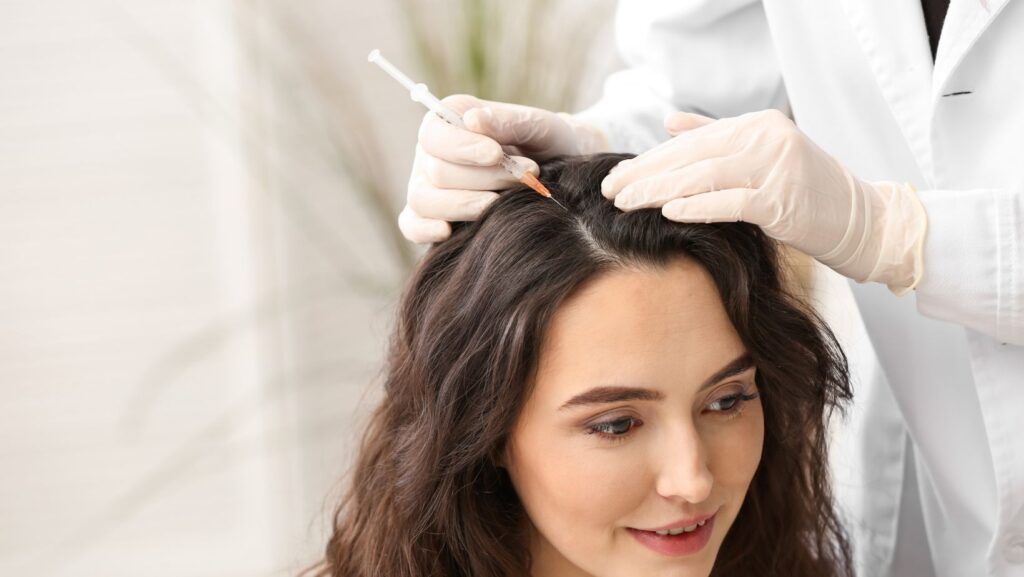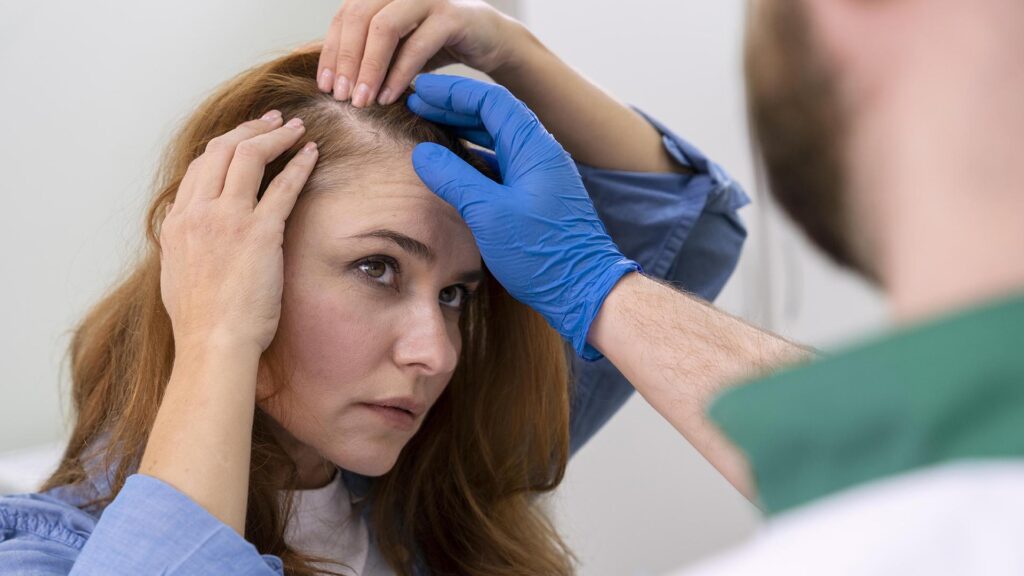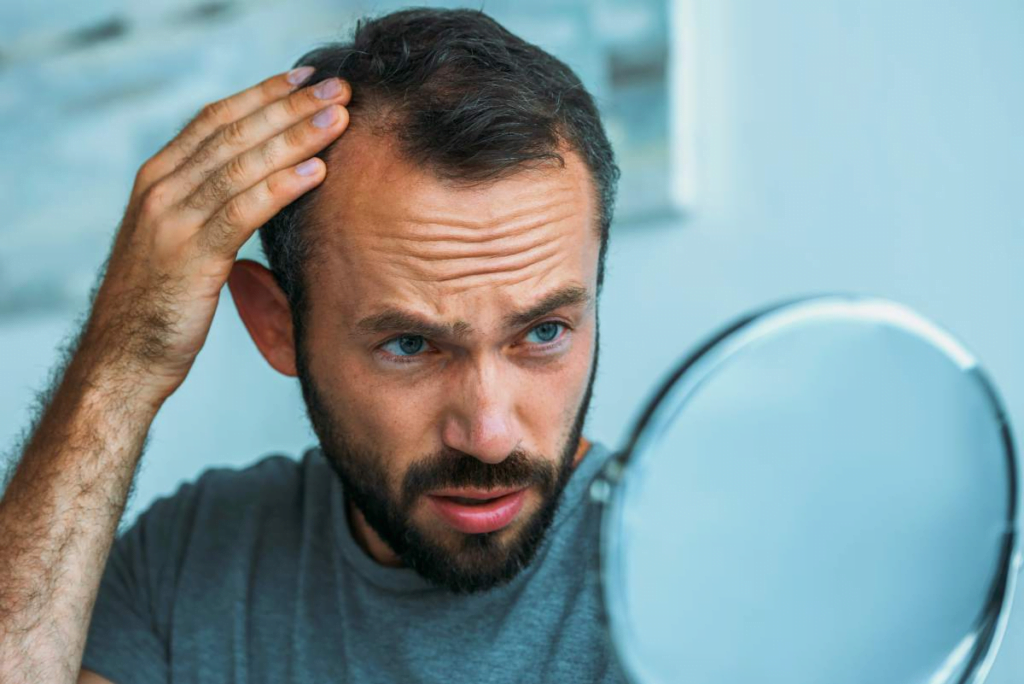
Hair transplant and HRT: Friends or Foes? One of the most important areas of change for trans women undergoing feminine transformation is the hairline. A feminine forehead line is not only an aesthetic preference but also an important step toward achieving mental and physical well-being. Managing this step correctly through both hormone therapy (HRT) and hair transplantation helps maintain the health of transplanted hair. Does hormone therapy harm hair transplantation? Or conversely, how does hair transplantation affect HRT?
In this article, we will examine in detail how the hair transplantation process interacts with hormone therapy and share how the process can be managed most effectively, especially for trans women.
İçindekiler
How Does Hormone Therapy (HRT) Affect Hair?
For transgender women, the gender affirmation process typically begins with hormone therapy. During this treatment, estrogen and testosterone suppressants are commonly used. These medications can cause the following effects on hair:
- It can reduce or stop male-pattern hair loss (androgenetic alopecia).
- It does not promote new hair growth; however, it provides significant support in preserving and strengthening existing hair.
- It can affect hair structure: feminine hair structure characteristics may begin to appear, resulting in finer, softer hair texture.
HRT reduces hair loss and gives the hair a more feminine form. However, it does not promote new hair growth in thinning areas on its own. If thinning hair is causing an unsightly appearance, transplantation comes into play at this point.
Hair Transplantation and Hormones: Do They Conflict or Support Each Other?
Hormone therapy and hair transplantation are part of a single process for trans women: Gender Affirmation! So, do these two interfere with each other? Many people hesitate to undergo hair transplantation while on hormone therapy. However, the truth is:
Hormone therapy does not harm the transplantation process. On the contrary, managing the process together and approaching it correctly yields highly effective results.
Why Doesn’t HRT Harm Hair Transplantation?
- HRT stops hair loss: It protects the area around the transplanted hair, supporting the hair transplant.
- New hair follicles are not negatively affected by hormones: Because the follicles used in transplantation are typically genetically resistant to hair loss, they do not fall out due to hormones.
- The likelihood of achieving permanent hair increases: Because hormonal balance supports the health of both existing hair and transplanted hair in the long term.
What Does Hair Transplantation Mean for Trans Women?
Trans women anticipate multiple benefits from hair transplantation. The primary benefit is achieving a feminine hairline. In cases where the primary goal is the hairline, the transplantation procedure is quite different from “male-pattern hair transplantation.”
Trans women primarily opt for hair transplantation for the following purposes:
- A rounder, lower, and more feminine forehead line,
- Starting the hairline from the temples rather than the center,
- A natural and aesthetic appearance,
- Softening the harsh and sharp lines in the forehead area.
Therefore, transplantation for transgender women is not just a technical procedure. It should also be considered an aesthetic “redesign” process.
At What Stage of Hormone Therapy Should Hair Transplantation Be Performed?
Ideal and coordinated timing is important to get the best results from both procedures. The most common practice in terms of timing is as follows:
- It is recommended to undergo hair transplantation at least 6 months after starting hormone therapy.
- During this period, hair loss is observed, hair structure stabilizes, and the hairline planning becomes clearer. The ideal timing for permanent results is planned in this way.
While some doctors may consider hair transplantation possible at an earlier stage, waiting and being patient generally yields better results in terms of the body adapting to hormonal changes. The following points are important to know about this process:
- Hormone therapy does not harm transplantation; on the contrary, it has a supportive effect and improves results.
- HRT helps preserve existing hair, while transplantation focuses on restoring lost hair.
- The hair transplant process for transgender women requires special and personalized planning to create a feminine hairline.
- The best results are achievable through patient process management and a team of experts.
This Journey Is Extremely Sensitive and Personal

Although hair may be the last thing that comes to mind in the feminization process, it is an important element in enhancing a feminine appearance. At this point, it is understandable that trans women would want to undergo hair transplantation to make their new identity more aesthetic and that they would be concerned that hormone changes could harm this process.
Because hair is not just an aesthetic element; it is also part of being able to say “I am here” when you look in the mirror. For trans women, hair transplantation is a symbol of finding oneself and making peace with oneself. With proper planning, a patient approach, and a reliable team, achieving the feminine appearance you envision is possible. While hormones support you from the inside, transplantation can align your outward appearance with who you are. In gender transition, both support each other, and each is equally important.
Hairtrans.com was founded by world-famous plastic surgeon Dr. MFO, who is an expert in facial feminization or facial masculinization surgeries, and is managed under his leadership. Would you like to have a hair transplant under the coordination of a plastic surgeon with many years of experience?
Whether you are a trans woman or a natural born male or female, if you are looking for the best hair transplant, contact us now.


